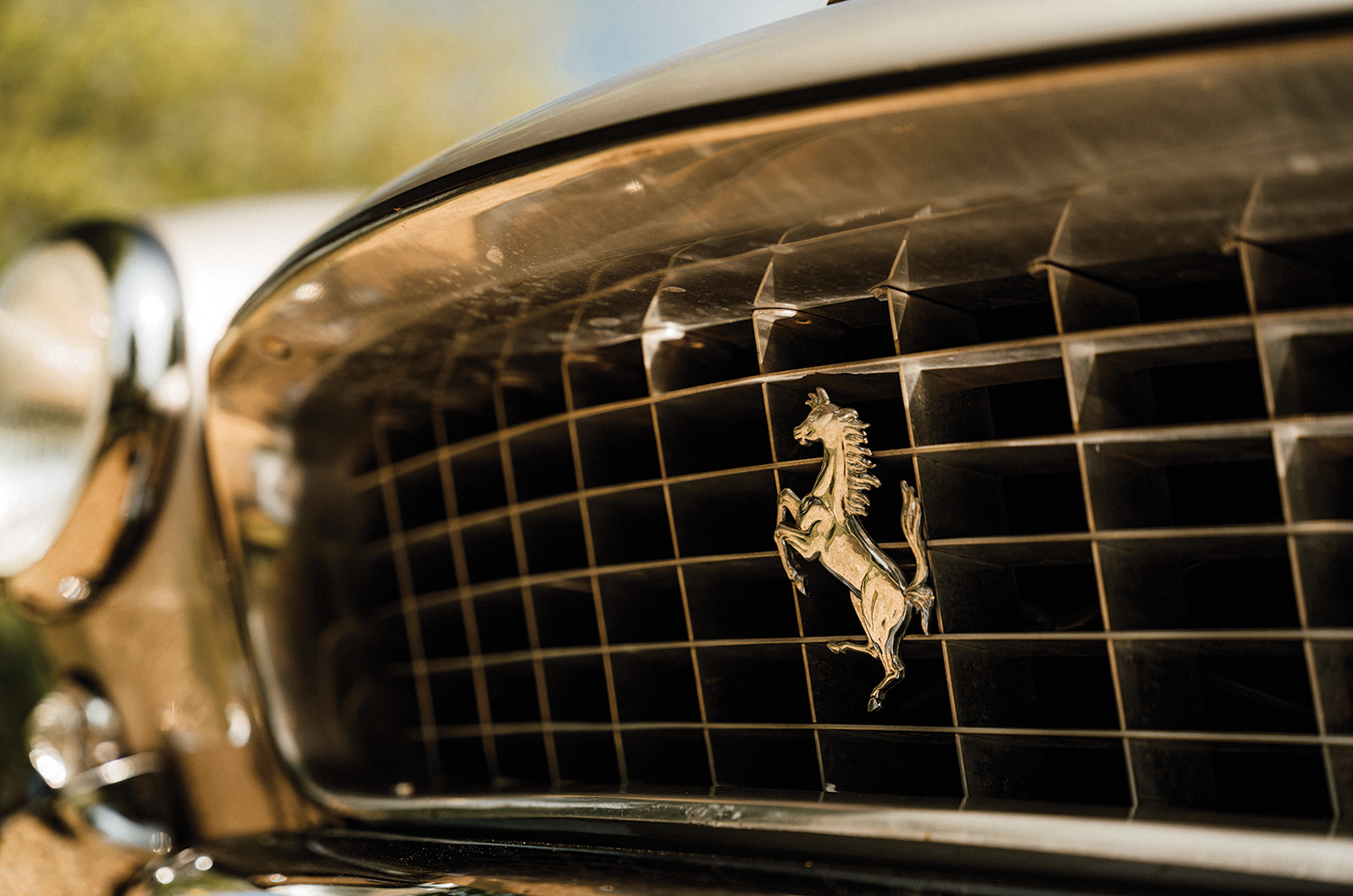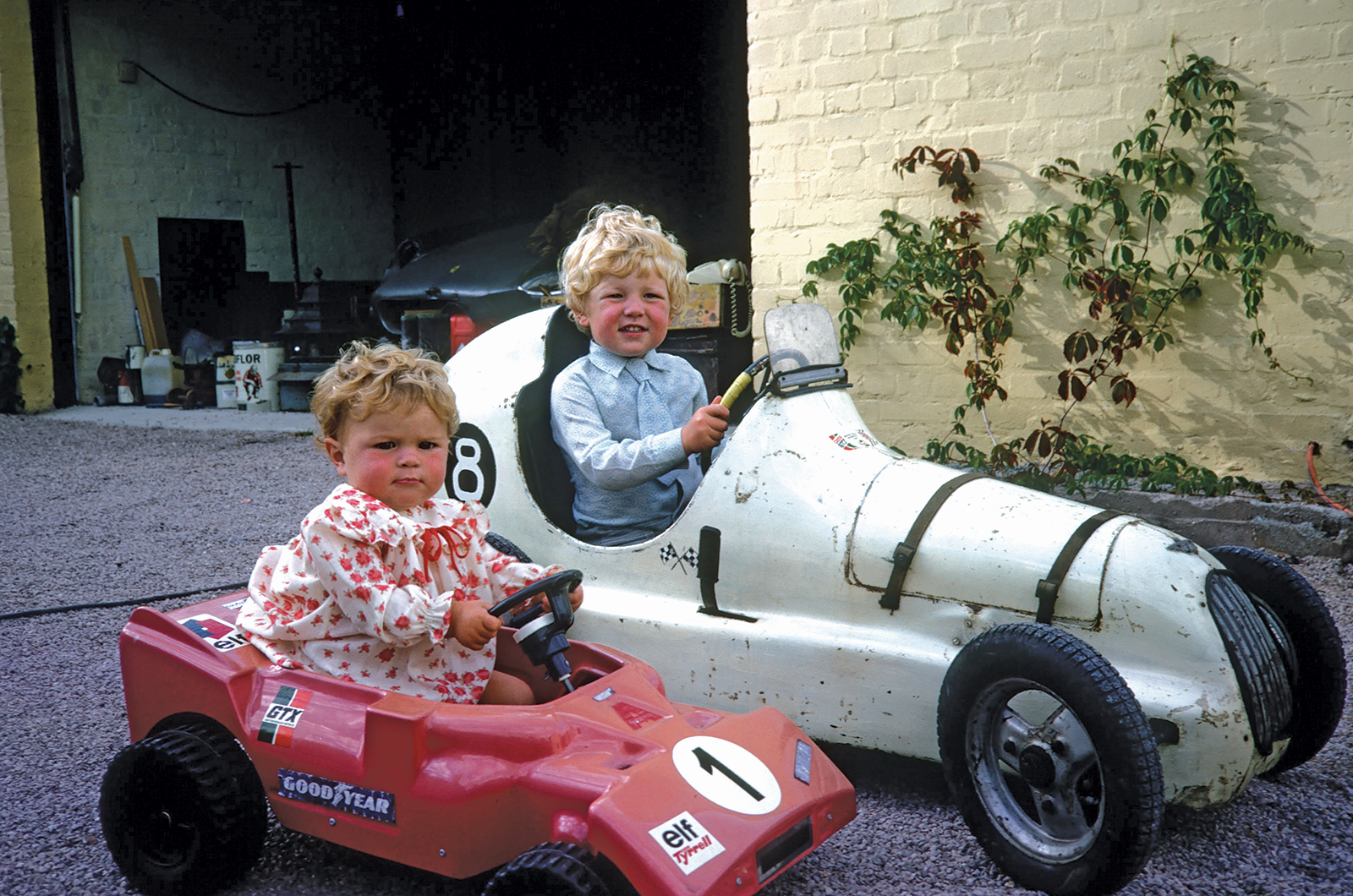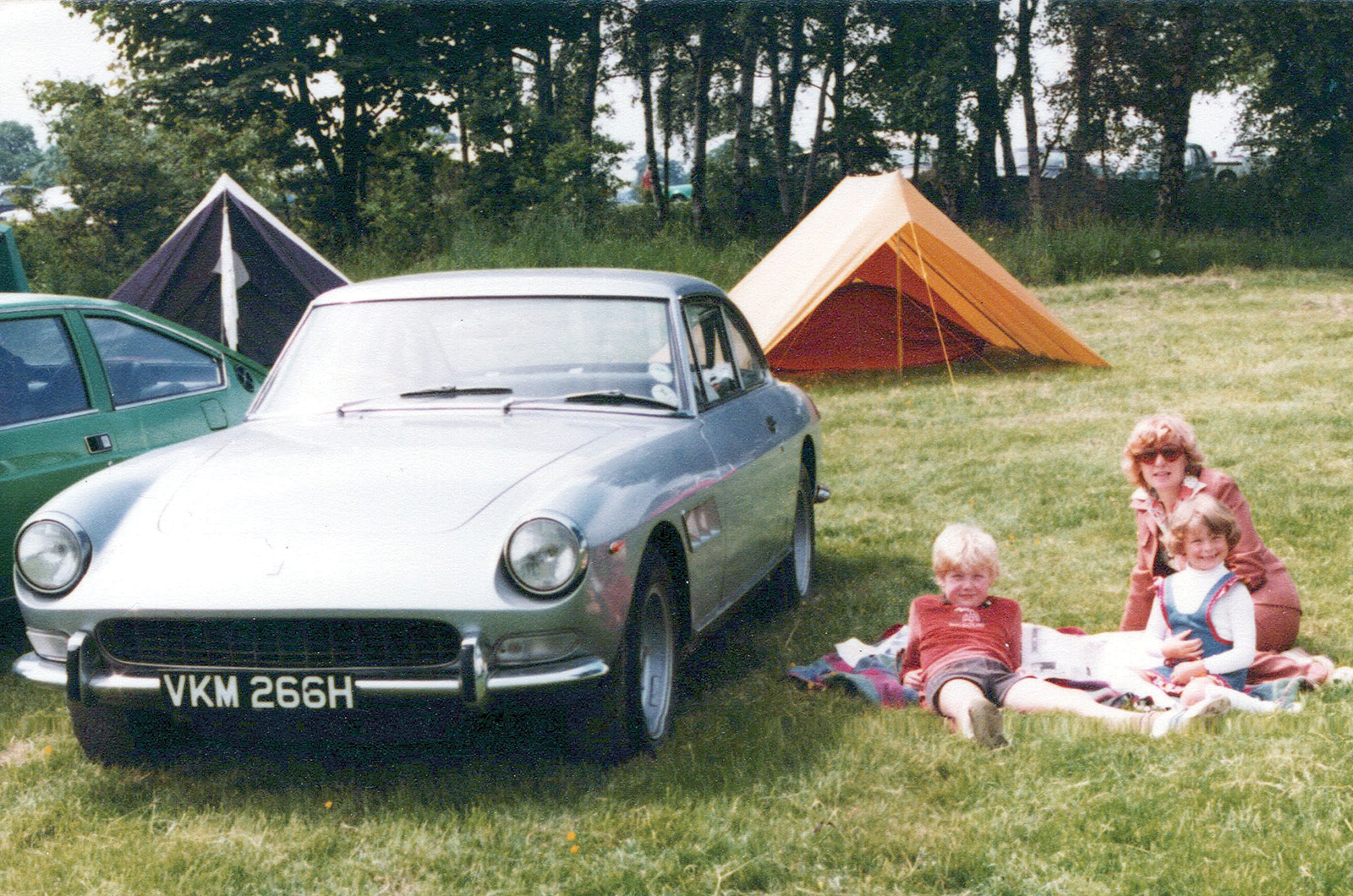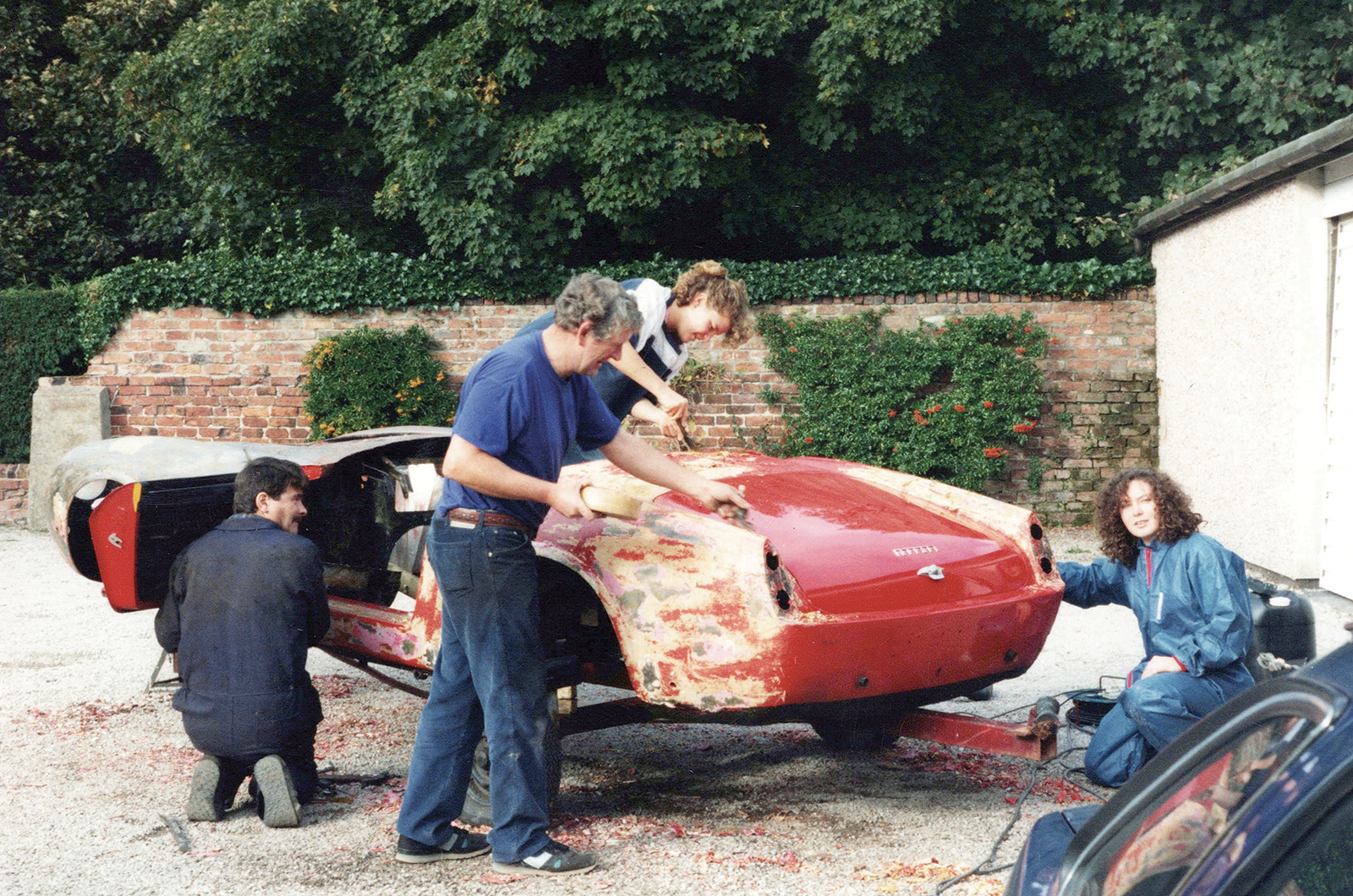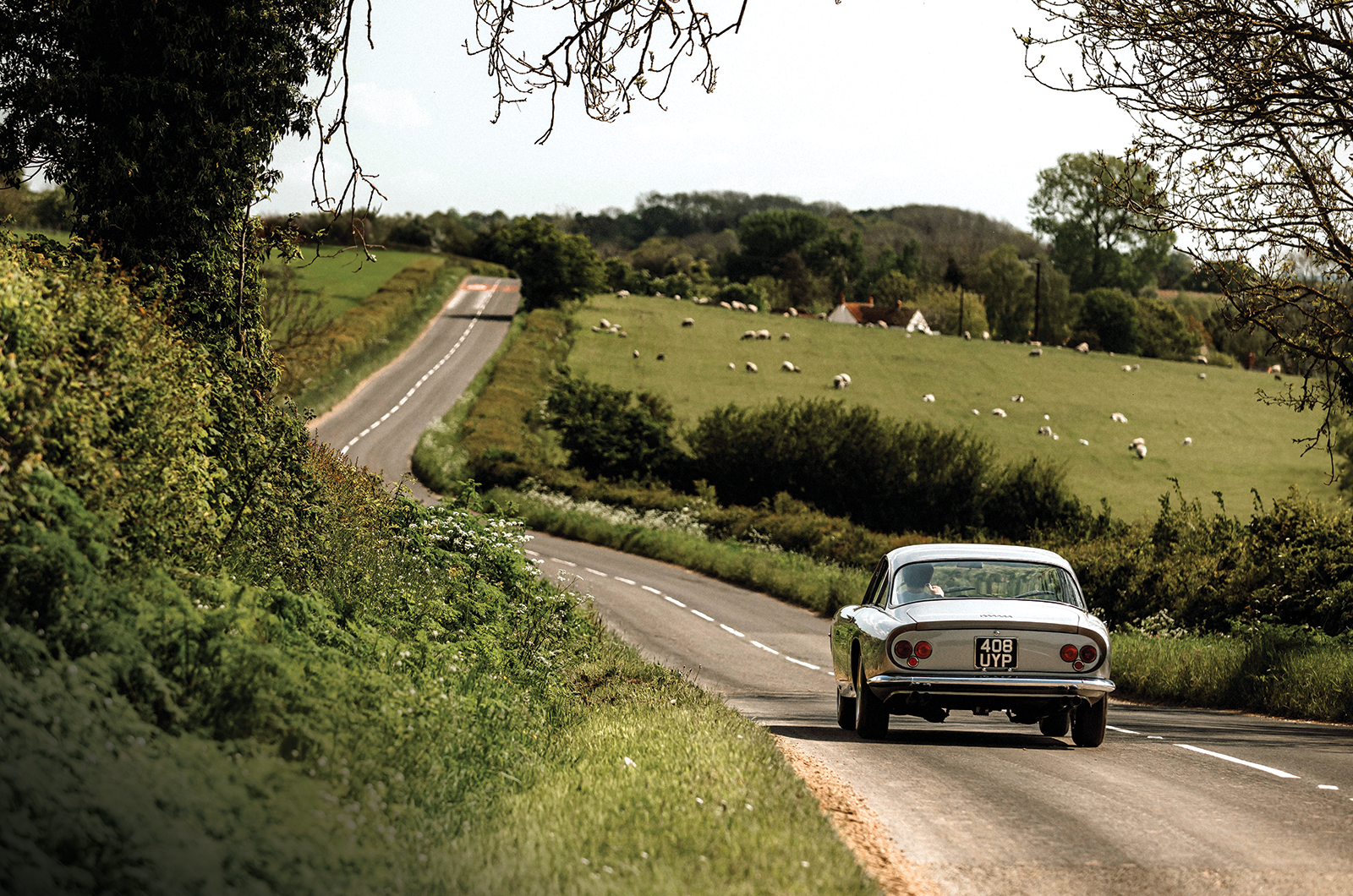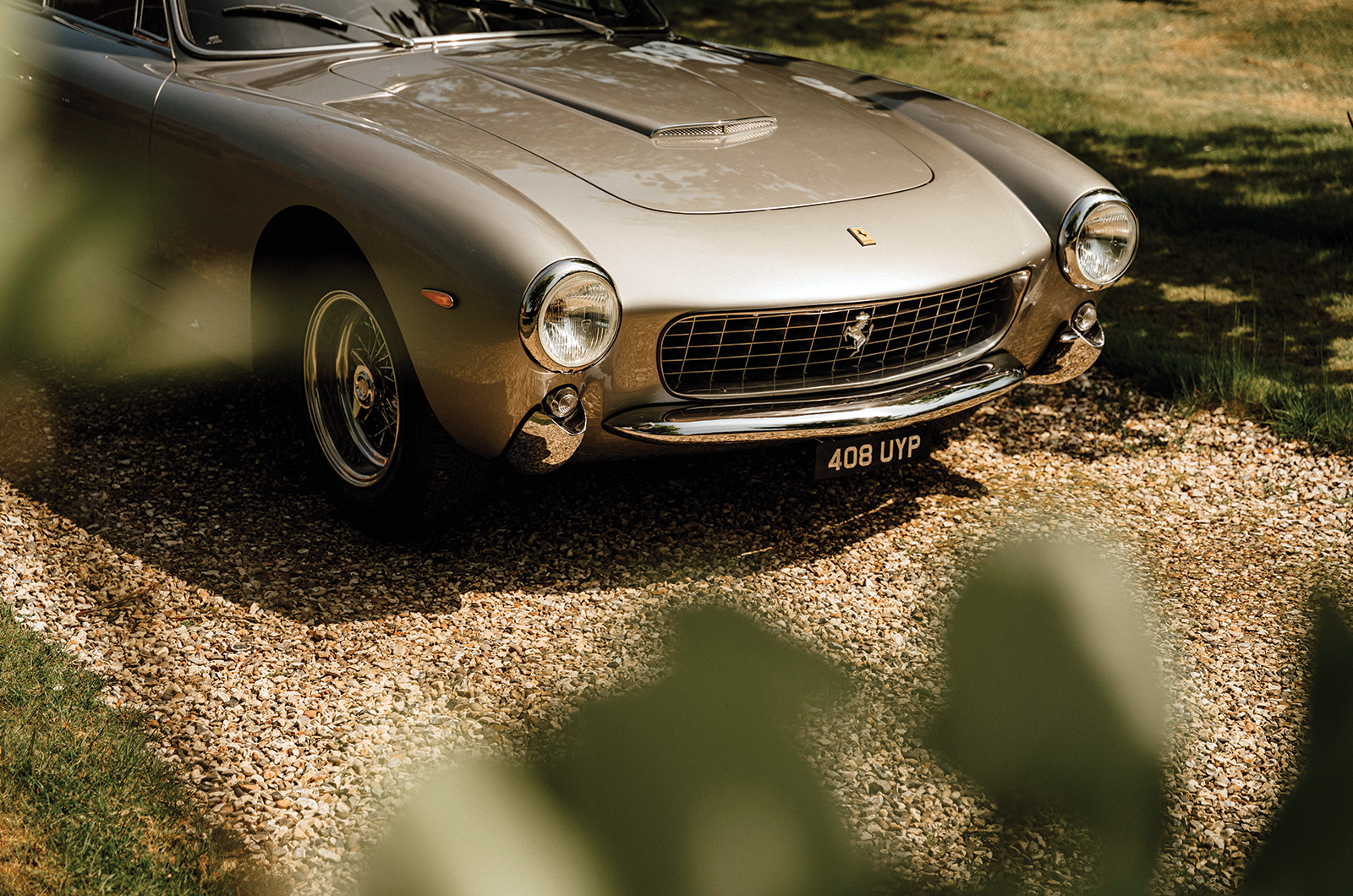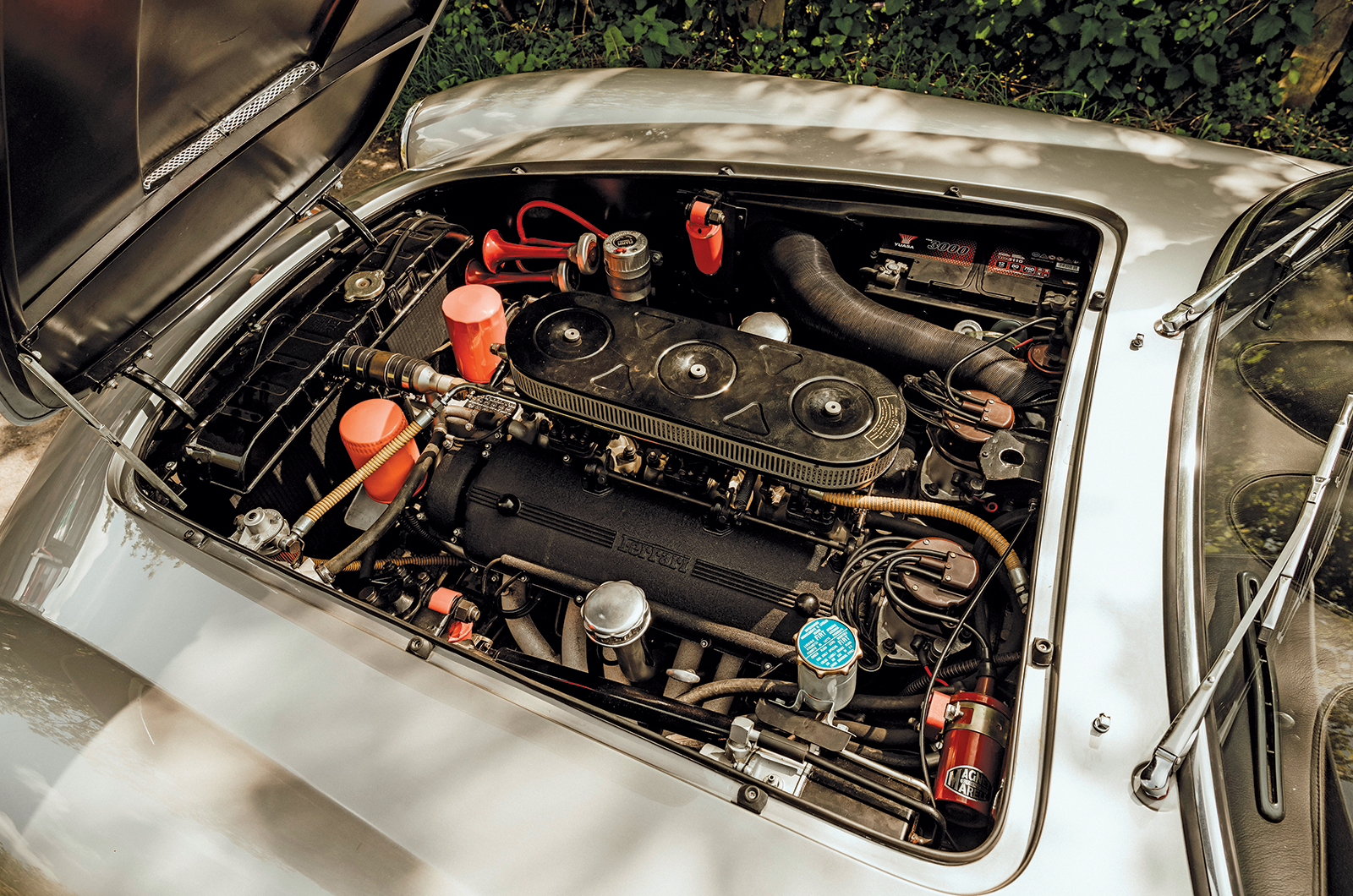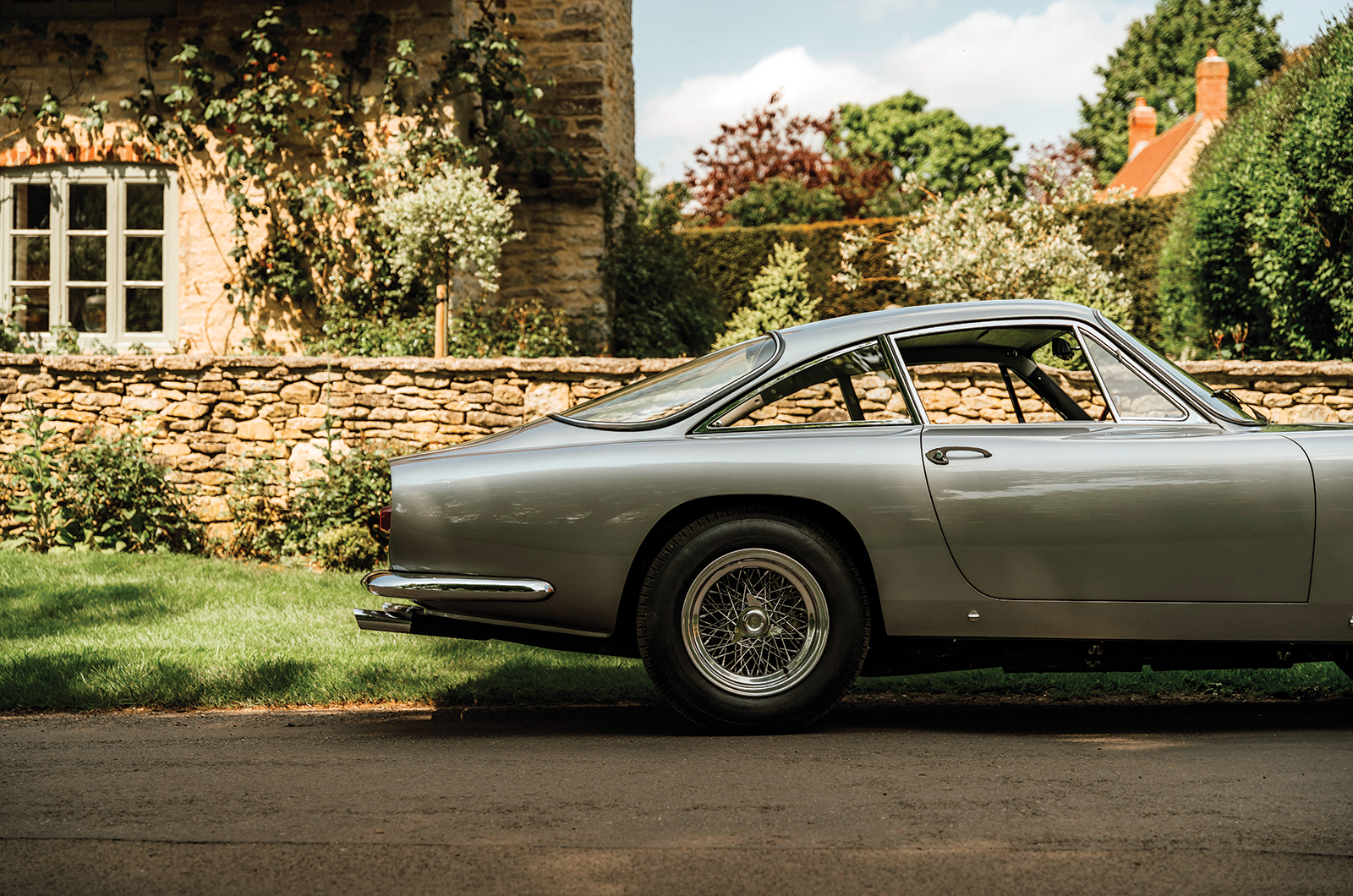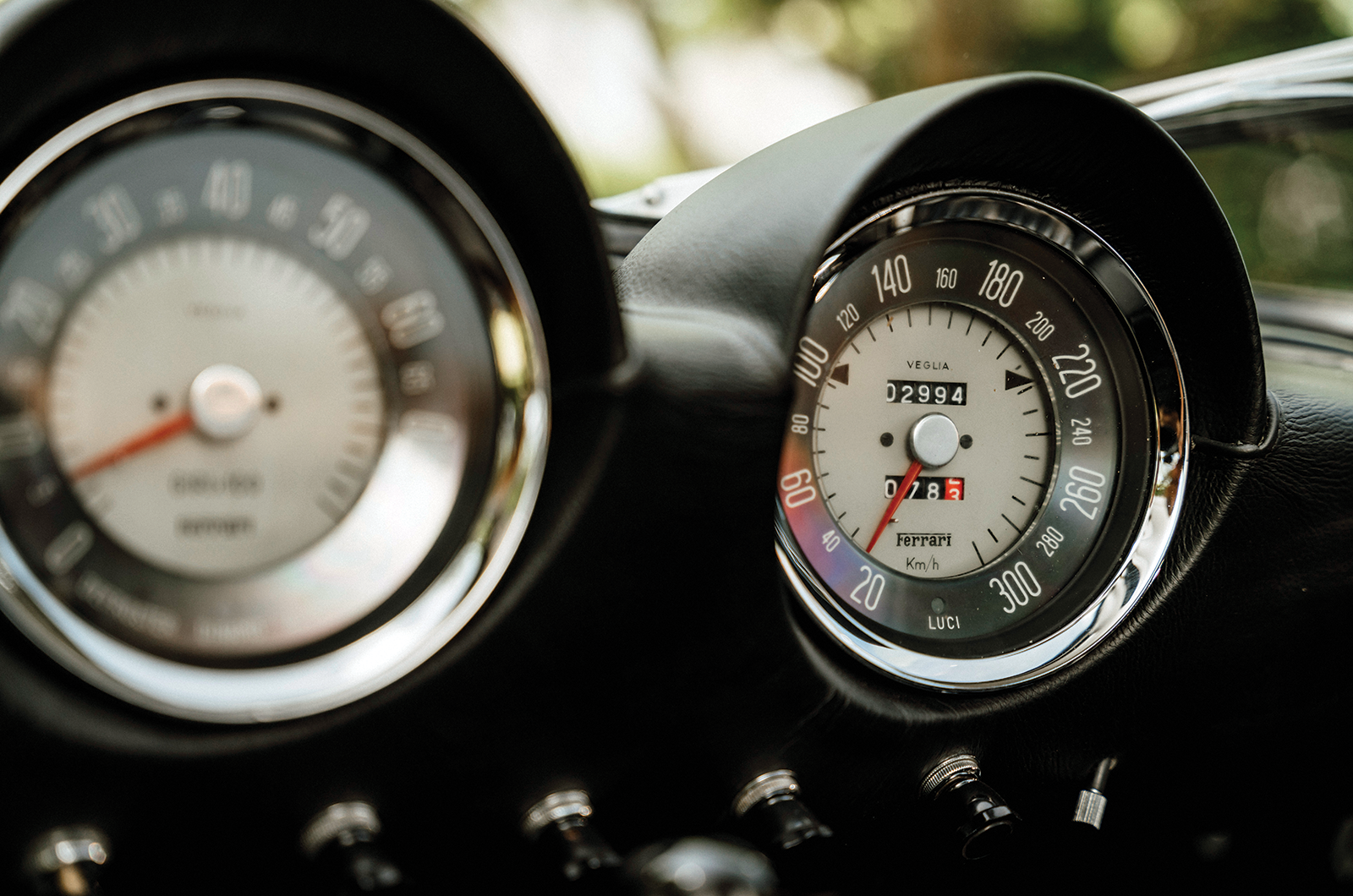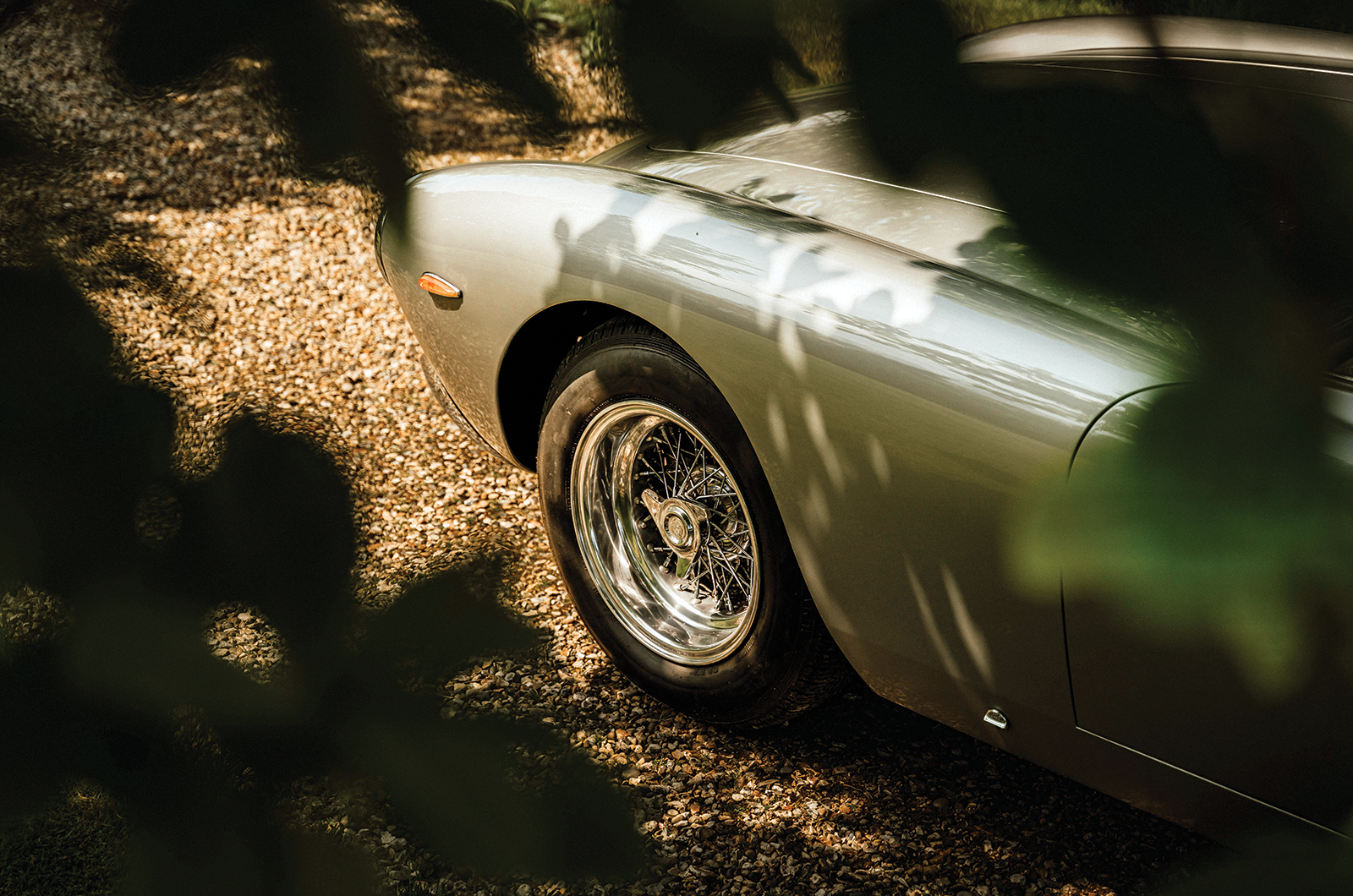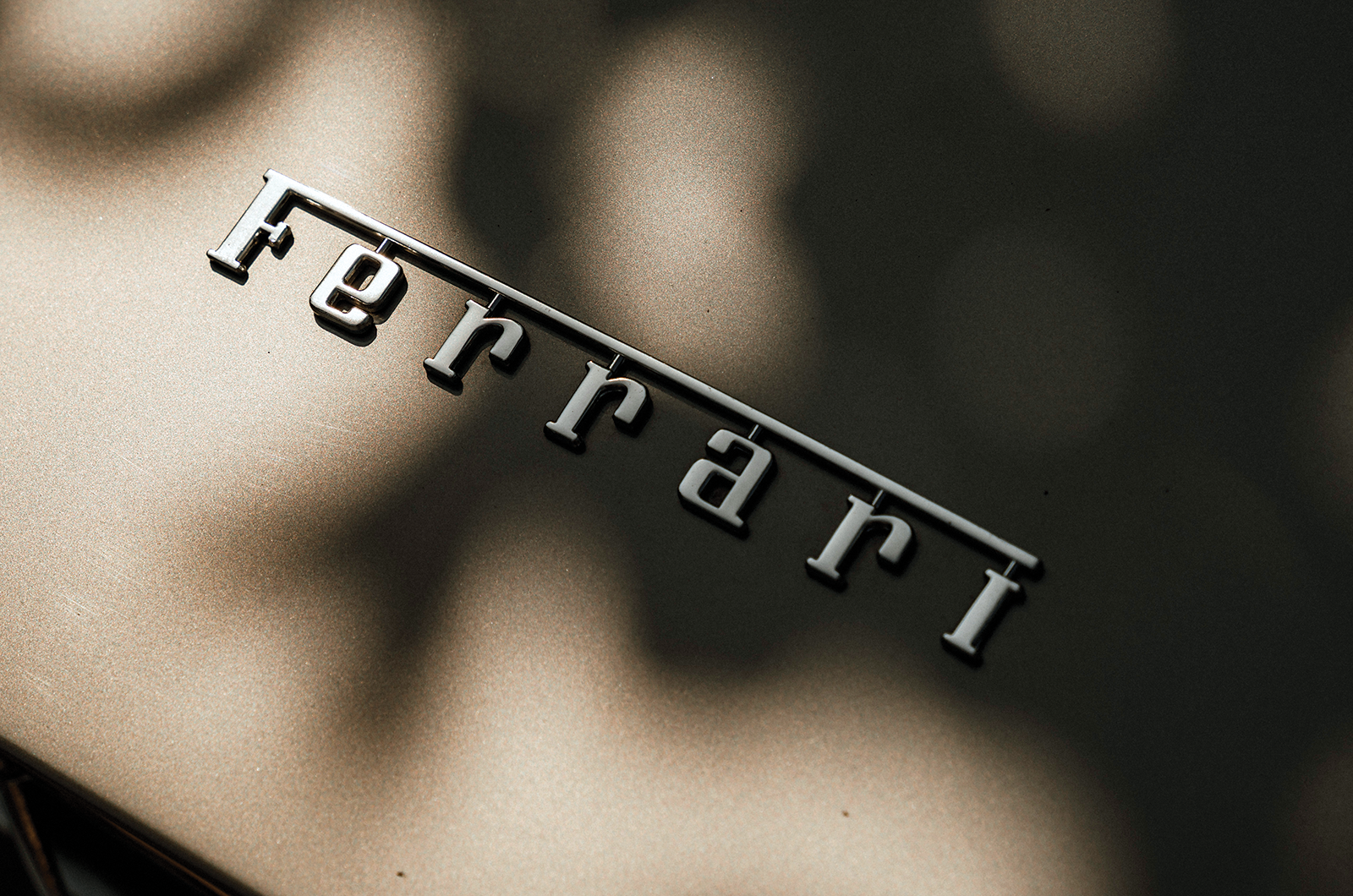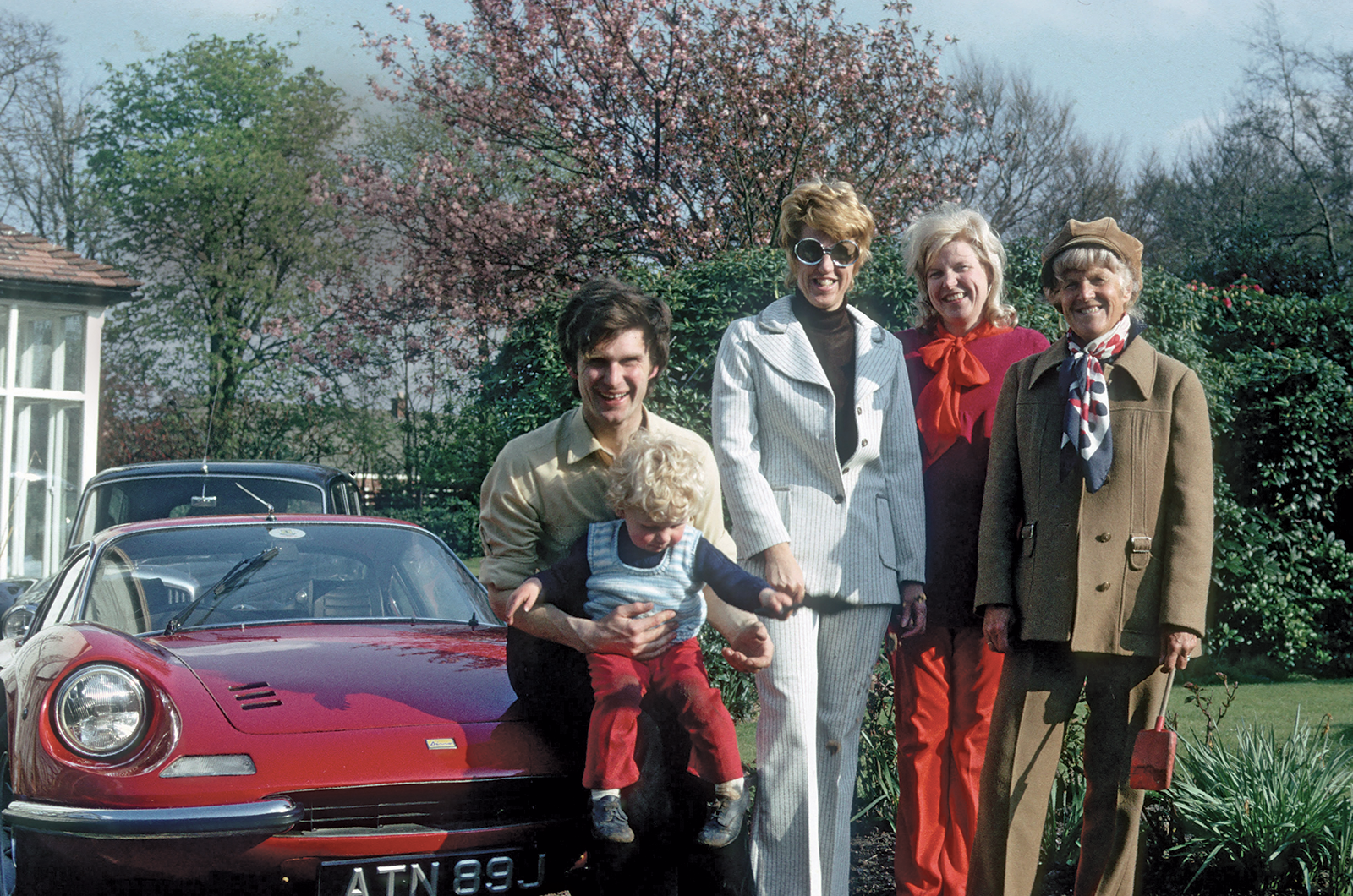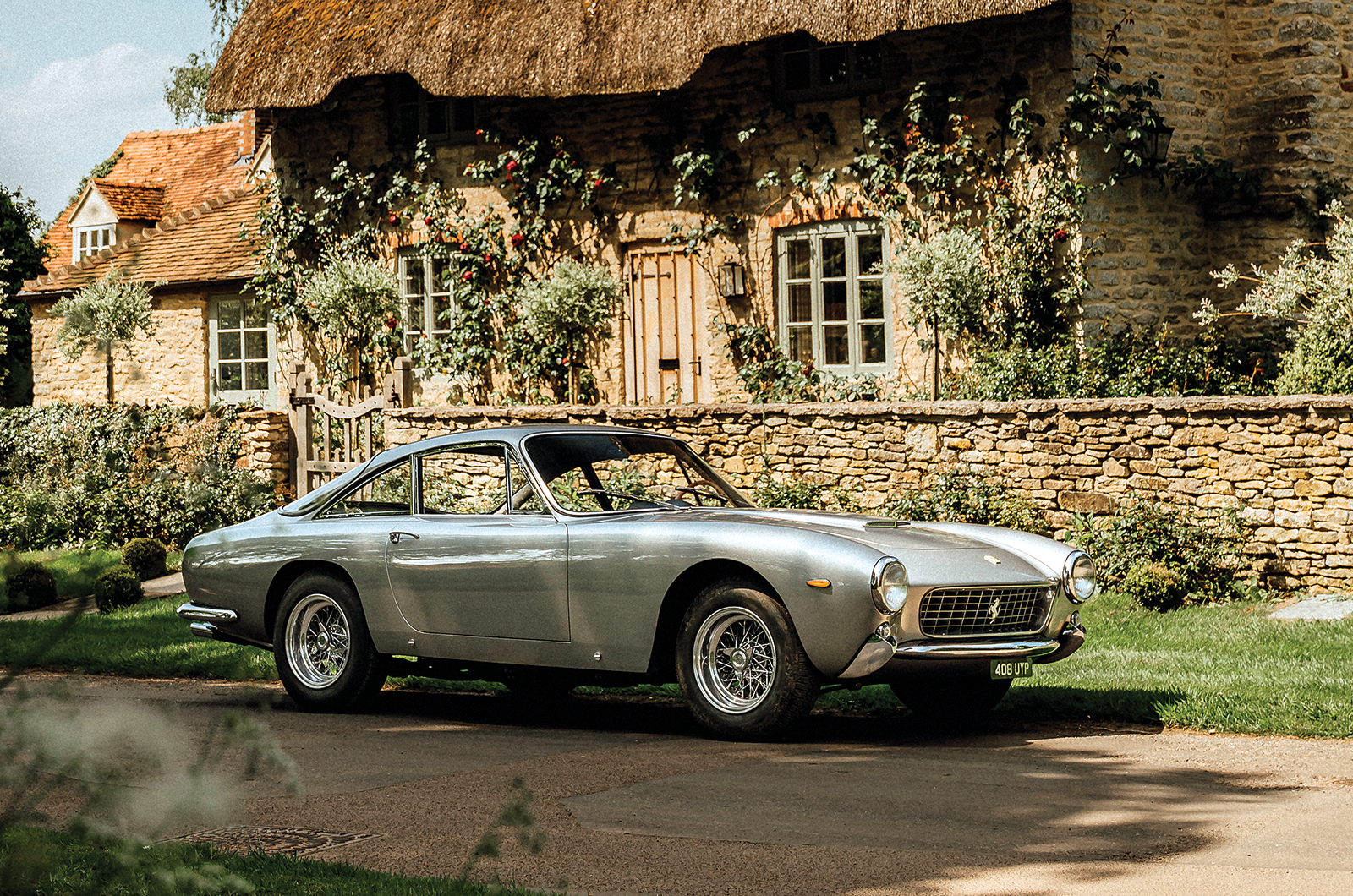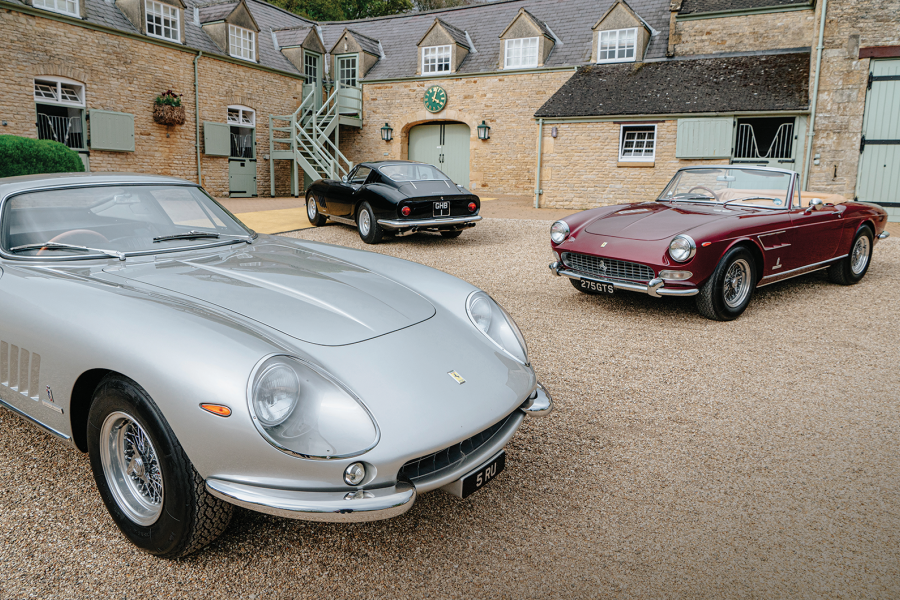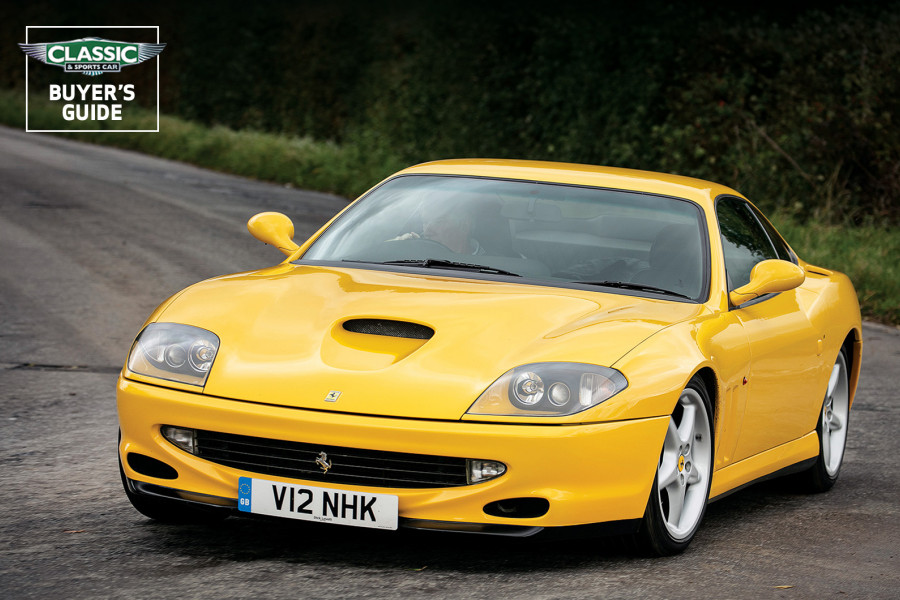In a letter written decades later to Stephen Pilkington, Pourret explained that the car served briefly as a demonstrator before being sold on to Guy Domet – a farmer from an area east of Paris.
The Ferrari 250GT Lusso’s gracefully imposing front end
It then had several other owners before being bought in 1969 by M de Manca d’Oliena, who lived in Bellerive-sur-Allier, near Vichy.
He kept the Lusso until May 1973, modifying its front end along the way, then – for some unfathomable reason – painting it pink.
His final act was to set fire to it in an unsuccessful attempt to claim the insurance money.
The car then passed to Patrice Chesnel, who dismantled it with the intention of restoring it, but instead sold it to an American owner who Pourret named as Mark Wallm – although it’s possible that he misspelt the surname.
‘Not only was it the car used for the model’s launch at the Paris Salon, but it also featured in the promotional material’
He remembered Wallm desperately wanting to believe that the bodywork modifications that had been done by a local specialist during M de Manca d’Oliena’s ownership were actually the work of Italian coachbuilder Scaglietti.
After being stored for many years in The Netherlands, 4053GT was sold during the 1990s to a California-based enthusiast before being acquired by Stephen Pilkington.
As Castelhano had predicted, he set about returning this historic Lusso to the road – a job that would not be the work of a moment.
This Ferrari 250GT Lusso has twin tail-lights
The original engine block – stamped with numero interno 492/62 – was still with the car, but much else was missing, including the rear axle, carburettors, cylinder heads, interior trim and wheels.
There was at least a 250 Lusso gearbox included, even if it wasn’t original to the car.
Undeterred, Stephen pressed on and the Ferrari was returned to its former glory over the course of the following few years.
One detail about which Pourret was mistaken was the dashboard: he stated that 4053GT had a Short Wheelbase-style dash, with the rev counter and speedometer positioned in front of the driver, but photographs from the model’s 1962 Paris launch clearly show that it had the production-style Lusso layout, with those key dials offset towards the centre of the car.
Stephen Pilkington sits on a Dino 246GT, one of more than 100 Ferraris he has owned, in 1973, with son Richard on his lap
The front bodywork was restored to its correct shape, the engine was built up by Roelofs Engineering in The Netherlands and the rear axle from a 250GTE was fitted.
Stephen sourced parts from around the world and his own extensive collection, and the whole process took until 2016 – by which time his health was sadly starting to deteriorate.
Suzie therefore took up the baton in terms of establishing 4053GT’s rightful place in Ferrari history once and for all, and her efforts culminated in the Lusso being displayed on Tim Dutton’s Rétromobile stand in early 2024.
This Ferrari 250GT Lusso, displayed at the Paris Salon, has now been returned to its former glory
Fittingly, the European season-opener was held at the same venue as the 1962 motor show, which had that year moved to Paris Expo Porte de Versailles from its traditional home at the Grand Palais.
On that occasion, nearly 900,000 visitors would have passed through its halls and seen this stylish new Ferrari.
There was no shortage of interest more than 60 years later, with Suzie – every inch her father’s daughter – spending most of her time deep in discussion with marque cognoscenti.
The story of this very special Ferrari 250GT Lusso had finally come full circle.
Images: Max Edleston
Enjoy more of the world’s best classic car content every month when you subscribe to C&SC – get our latest deals here
READ MORE
Ferrari 250GTE: Enzo’s roadgoing winner
Ferrari 250GT SWB and 275GTB/4: a lasting legacy
Ferrari Daytona Berlinetta, Spider and Competizione: kings of the road
James Page
James Page is a regular contributor to – and former Editor of – Classic & Sports Car

